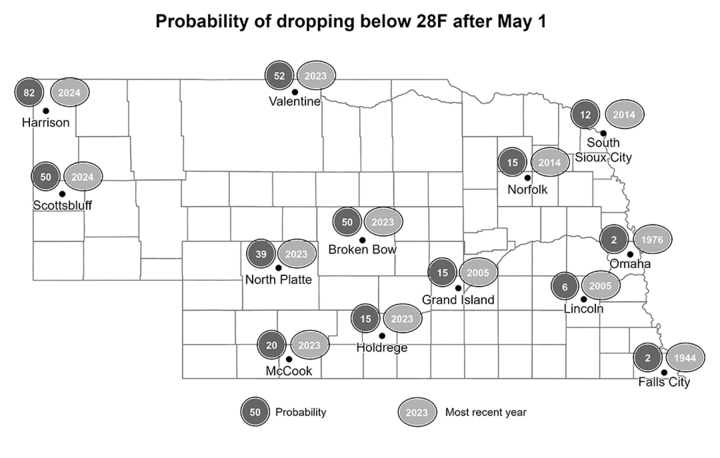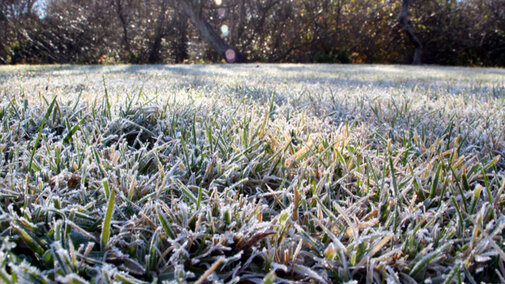Killing Freeze Chances
The first of May is a good time to assess the probability for a killing freeze, which we are defining as minimum temperatures equal to or colder than 28°F, based on long-term records (1901-present).
Figure 1 shows that the probability of such an event is very unlikely in southeast Nebraska and not probable at locations in northeast and south-central sections of the state. Falls City hasn't dropped below 28°F after this date since 1944 and it's going on a half century since the last killing May freeze in Omaha.
Chances of a killing freeze after May 1 go up to about four in 10 for North Platte and is essentially a coin-flip for Valentine and Scottsbluff. But all sites that we analyzed west of Highway 281 have had a killing freeze after May 1 as recently as two years ago. So even though the probability is not that high in Holdrege and McCook, the risk is meaningfully higher than 200 miles further east. Areas of the northern Panhandle at higher elevations are very likely to see at least one more morning with temperatures below 28°F after May 1.

We also did a quick climatology of the average last spring frost (32°F) during four different 30-year normal periods. Analysis of stations around the state going back to the beginning of the 20th Century shows a mixed picture for trends in the average last spring freeze. Norfolk and Scottsbluff show a more definitive trend toward the last spring freeze occurring earlier. Most locations around the state, though warming overall in the spring, have not necessarily shown a significant trend toward earlier last frost. This could have implications for sensitive fruit trees that may be "waking up" earlier and then getting nipped.
It also shows that planting corn and soybean in March in southeast Nebraska is still not a great idea, even if soil temperatures are increasingly suitable in the final days of March for planting.
| 1901-1930 | 1931-1960 | 1961-1990 | 1991-2020 | |
|---|---|---|---|---|
| Scottsbluff | May 17 | May 13 | May 4 | May 9 |
| Valentine | May 11 | May 7 | May 12 | May 12 |
| North Platte | May 4 | May 2 | May 9 | May 13 |
| Grand Island | May 2 | May 1 | April 26 | April 26 |
| Norfolk | May 8 | April 30 | April 30 | April 27 |
| Sioux City | April 28 | April 26 | April 27 | April 28 |
| Omaha | April 15 | April 19 | April 22 | April 20 |
| Lincoln | April 21 | April 25 | April 23 | April 25 |
| Falls City | April 15 | April 25 | April 19 | April 19 |

